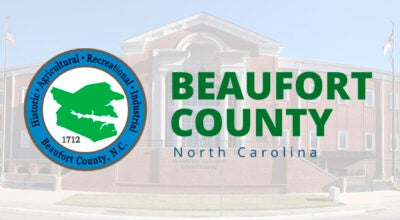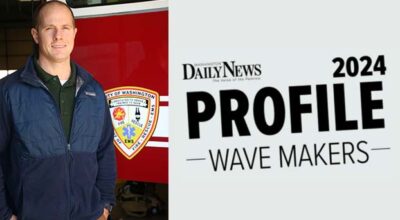Hurricane season looms
Published 7:52 pm Thursday, May 24, 2012
With an early Atlantic hurricane season spawning a recent tropical storm, now is the time to prepare, according to John Pack, Beaufort County’s emergency-management director.
To that end, the county’s disaster responders and area nonprofit organizations will provide information about disaster preparedness at an event from 9 a.m. to 1 p.m. Saturday at Lowe’s Home Improvement in Washington. Lowe’s is cooperating in sponsoring the event.
The event features activities for children and adults, Pack said.
Saturday’s preparedness event comes even as federal officials Thursday warned coastal residents to start stocking up on hurricane supplies and form evacuation plans.
This hurricane season got an early start when Tropical Storm Alberto formed Saturday off the coast of South Carolina. Alberto dissipated Tuesday over the Atlantic.
Alberto was unusual for being a small storm that formed in a small area favorable for storm development, but the weather conditions as spring transitions into summer sometimes produce tropical systems, said Bill Read, director of the National Hurricane Center.
Earlier this week, U.S. forecasters predicted that this year’s Atlantic hurricane season would produce a normal number of about nine to 15 tropical storms, with as many as four to eight of those becoming hurricanes.
That outlook was issued by the National Oceanic and Atmospheric Administration for the six-month storm season that officially begins June 1. One to three storms could become major hurricanes with top winds of 111 mph or higher, according to NOAA’s prediction.
“That’s still a lot of activity. So just because we’re predicting a near normal season doesn’t mean anybody’s off the hook at all,” said Gerry Bell, the lead seasonal forecaster at NOAA’s Climate Prediction Center.
Atmospheric and marine conditions indicating a high-activity era that began in 1995 for Atlantic hurricanes continue, Bell said.
However, the weather phenomenon known as El Nino, which warms Pacific waters near the equator and increases wind shear over the Atlantic, may develop by the late summer or early fall and help suppress storm development.
“Our range (of expected storms) is a bit wider this year because of this inherent uncertainty right now based on the best guidance we have as to whether El Nino will form or not,” Bell said.
Forecasters name tropical storms when their top winds reach 39 mph; hurricanes have maximum, sustained winds of at least 74 mph.
On Thursday, the National Hurricane Center was watching a weather system off the coast of Florida that had a 40-percent chance of developing into a second tropical system. If it does develop, that storm will be named Beryl.
The seasonal average is 11 named storms, six hurricanes and two major hurricanes. The 2011 hurricane season, one of the busiest on record with 19 named storms, produced Irene, one of the costliest storms in U.S. history.
Irene killed at least 47 people in the U.S. and at least eight more in the Caribbean and Canada as it followed a rare path up the Eastern Seaboard from North Carolina, across the Mid-Atlantic and near New York City.
Hurricane season ends Nov. 30, and the peak period for hurricane activity runs from August through October.
The Associated Press contributed material to this report.
2012 Atlantic Tropical Cyclone Names
Since 1953, Atlantic tropical storms were named from lists originated by the National Hurricane Center. They are now maintained and updated through a strict procedure by an international committee of the World Meteorological Organization. The list of 2012 Atlantic tropical cyclone names is as follows: Alberto, Beryl, Chris, Debby, Ernesto, Florence, Gordon, Helene, Isaac, Joyce, Kirk, Leslie, Michael, Nadine, Oscar, Patty, Rafael, Sandy, Tony, Valerie and William.
Source: The National Weather Service’s National Hurricane Center





